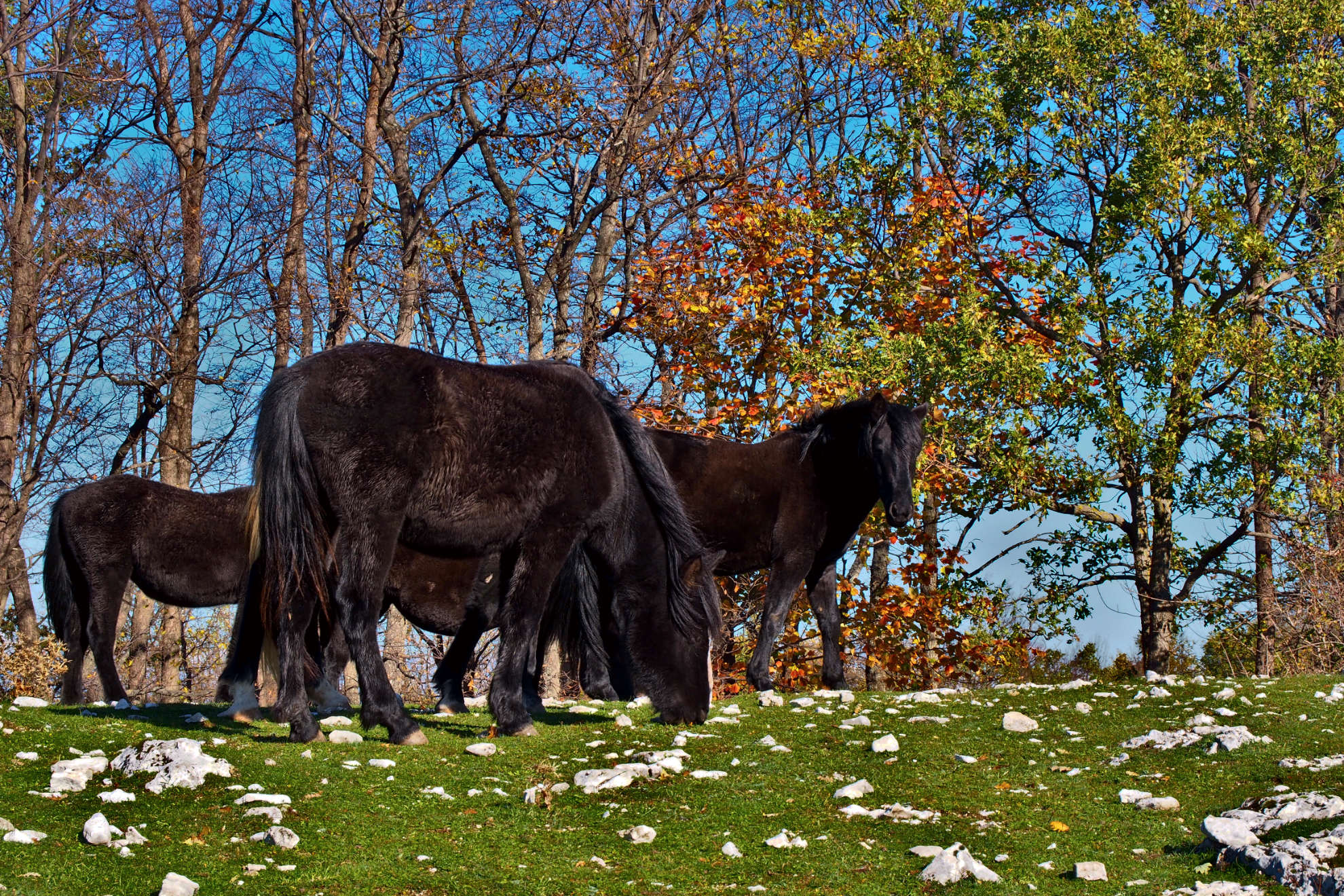Fifty minutes by car from Rome are enough to get away from everything: from communications, from traffic, from the comfort of navigators and electronic maps, from thoughts.
Ph. Ludovica Baratta

Monteflavio, a small village that has just over a thousand people in the metropolitan area of the capital city, offers you this advantage: once you reach it, the phone has no signal in almost any part of it. And the same is for the Internet. We are 858 meters high and the air is so cold that it has the power to freeze thoughts. The wind, on the other hand, is so strong that if you stay still, it moves you. So you just have to walk, even at a fast pace.
And it could not be otherwise in a small town located at the foot of the highest mountain in the Lucretili Mountains Park: Monte Pellecchia, 1369 meters high. Yet once upon a time the pungent cold of this place even had an economic value.
Ph. Ludovica Baratta

The path that climbs to the top was in fact an ancient snow road: a rut that connected the mountain places with the Via Salaria and therefore with Rome, allowing one of the most flourishing economic activities of the time for the local population to practice: the collection, conservation and trade of snow.
Ph. Ludovica Baratta

In particular, it was the papal authorities who increased these exchanges during the seventeenth and eighteenth centuries, organizing real public tender notices for the assignment of the snow trade. The latter was collected and piled up in wells, the so-called "neviere", located along the ridge to the top, then was placed on wagons and transported to Rome.
It was an important trade, but linked to climatic conditions and progress. When the latter came along with technology, the sale of snow stopped, the landscape changed a lot, but the cold remained.

Along the path that climbs up to the top of Pellecchia for some years now there has been a coniferous forest made of cypresses and black pine, the main merit of which was to attract the squirrels that populate these areas again. The numerous horses that graze free suggest instead that the trades of the past have given way to those related to sheep farming and forestry.
And while the wind continues to blow, making even the beech trees unstable in their posture, the trek to the summit continues for nearly eight kilometers. A long final climb slowly brings the summit closer, which, like any strenuous undertaking, rewards with a panorama that ranges from Mount Terminillo to the snow-clad crest of Gran Sasso.

And it is the peak that also explains the meaning of the name Pellecchia: from the Latin Penniculus, “small pen”, this mountain is steep. It is the peak where a cross has been placed while all around is only sky, space and mountains.

